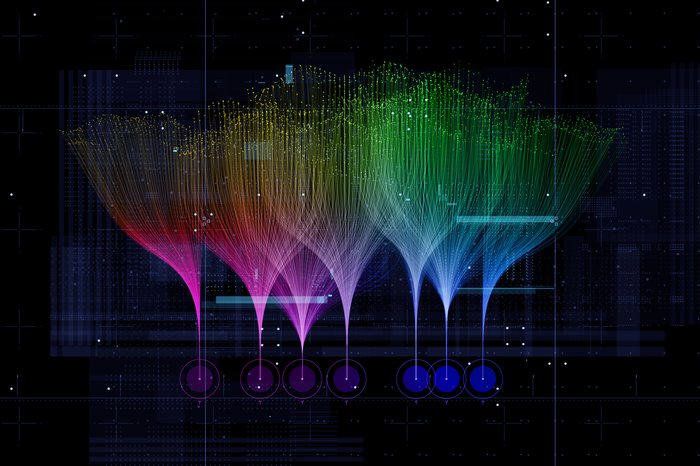AI agents are taking autonomous action. Google Agentspace is giving them a home

Kalyan Pamarthy
Group Product Manager, Google Agentspace
By being able to autonomously take actions, plan, reason, and choose what kinds of tools to use, agents are already reinventing many workflows in the enterprise.
AI agents are helping us reach a new level of productivity. By being able to autonomously take actions, plan, reason, and choose what kinds of tools to use, agents are already reinventing many workflows in the enterprise.
But when innovation moves this quickly, it becomes less clear how – or where – to manage it all. Agents are being built by everyone — from AI developers using sophisticated code and tools like our new Agent Development Kit, to business experts using no-code visual builders. While this boom in creation is powerful, it can lead to fragmentation, making it difficult for a business to govern, discover, and scale its agent strategy effectively.
This article will explore how agents work in action, and how a central hub like Agentspace is essential for bringing it all together.
AI agents in action
We're seeing AI agents excel in a number of industries, including, for example, customer service. This is how traditional chatbots worked in customer service: You would prescribe a predefined set of questions and answers, and the chatbot would try to respond to those. But if the user asked something that was not in that prescribed set of actions, the chatbot wouldn't be able to respond. Now, AI agents are smart, especially if they’re charged with generative AI. They can plan their own actions, perform research, reason over the information that they have access to, and give much better answers — capabilities that can enable richer self-service experiences, deliver improved customer satisfaction and resolution times, and more
We're also seeing agents used in a variety of different operational workflows across healthcare, manufacturing, and finance, and other industries in which agents can understand the problem, choose the right tools, and execute workflows with humans in the loop. With these traditional back-office operations increasingly being reengineered with AI agents, more and more of our customers are starting to see impacts .
But to enable this kind of sophisticated action, agents must be able to think and operate independently, grounded in the specific realities of the business.
Reasoning, autonomy, and enterprise truth
Reasoning is a critical aspect of deploying successful AI agents. If you think about how humans solve complex cognitive problems, we take in information from multiple sources and critically think about that information before we take action. We're able to consider the pros and cons, figure out what is important for decision-making, and continuously evaluate what actions to take. With generative AI models becoming more capable, now agents are able to do similar kinds of reasoning.
For agents to be useful, especially within the enterprise, they need to have access to enterprise truth or grounding, as we call it. Enterprise truth is table stakes for building AI agents. In the same way that human employees can’t perform their jobs without access to corporate data, tools, and understanding, AI agents also need this grounding — it is a prerequisite for effective AI agent adoption.
We normally see data distributed in a variety of different systems; some of our largest customers have hundreds of systems. If AI agents are not able to connect to these systems and ground themselves in this knowledge while respecting the privacy, security, and governance controls of the enterprise, these agents are not really useful or trustworthy.
As the intelligence of a single, autonomous agent grows, the next logical step is to combine their capabilities to tackle even bigger challenges.
From single actors to a “society of intelligence”
Multi-agent systems are just another level of intelligence on top of AI agents. In a multi-agent system, each individual agent has a specific set of goals that it has to accomplish. It comes up with its own plan and reasoning and a specific set of tools that it can use. You combine these different agents that are solving specific tasks to solve a much larger workflow.
This is why we're really excited about multi-agent systems, especially on Vertex AI. You can go from single agent systems, which you can think of as single actors or single team members, to a team of actors—a team of people, or a “society”—that is able to solve much more complex tasks because they're able to collaborate, discuss with each other, and then have access to the collective intelligence of that team or society to solve much higher-order problems.
When you have a society of agents all being created by different teams, you’ll need a way to bring them together and prevent them from becoming isolated.
Google Agentspace
Last year we started seeing, even within Google, many different groups creating agents. And these agents were developing in silos, just like we had seen data silos emerge over the past many years. We were starting to see this theme of agent silos emerge: lots of different agents popping up that the end users were not always aware of, but also agents not being able to talk to different agents. As agent development grows, Agent fragmentation and governance was going to become a big problem in the enterprise
Out of this came the idea that Agentspace could be the one single destination for information discovery, content generation, and agents within the enterprise. It is essentially three things:
- It can connect to all the different data sources within the enterprise and provide a Google-quality search with access controls being respected and Google Cloud-grade security, privacy, and compliance, so you can find the right information easily within the enterprise
- A fully powered enterprise search and multimodal chat using the latest Gemini models, all connected to these data sources, which gives it the grounding and connectivity to enterprise truth
- The home for all agents within the enterprise that builds on the foundations of Search and Gemini models. This means that users can access agents across the enterprise - regardless of which team built the agent or where it was running. Enterprises can also use agents from our Google Cloud Marketplace, where partners are developing and publishing them. For end users, you can easily discover and use agents across the enterprise, and for administrators, it's one place to organize and govern them.
With the right platform and tools in place, the path is clear for agents to become an even more integral part of our daily work.
Looking ahead
We've seen a lot of maturity in how AI and agents are being used over the past couple of years. Last year, we saw a lot of our customers rapidly prototype running experiments. Now, many of our customers are running production-grade AI systems, and we're seeing that evolve into agentic workflows. Over the next year or so, we should expect to see more AI agents deliver real ROI in the enterprise.
We envision a future where humans and AI agents are working side by side to solve some very complex problems, and these multi-agent systems where agents are collaborating with other agents and then in turn, with humans. I'm personally most excited about a hyper-personalized AI agent that understands what I do and knows the context of my work—almost like a tireless, personal AI agent that helps me do my daily tasks and also achieve a new level of creativity and productivity.
To learn more about the role of AI agents in the enterprise, download our 2025 AI Trends report.



